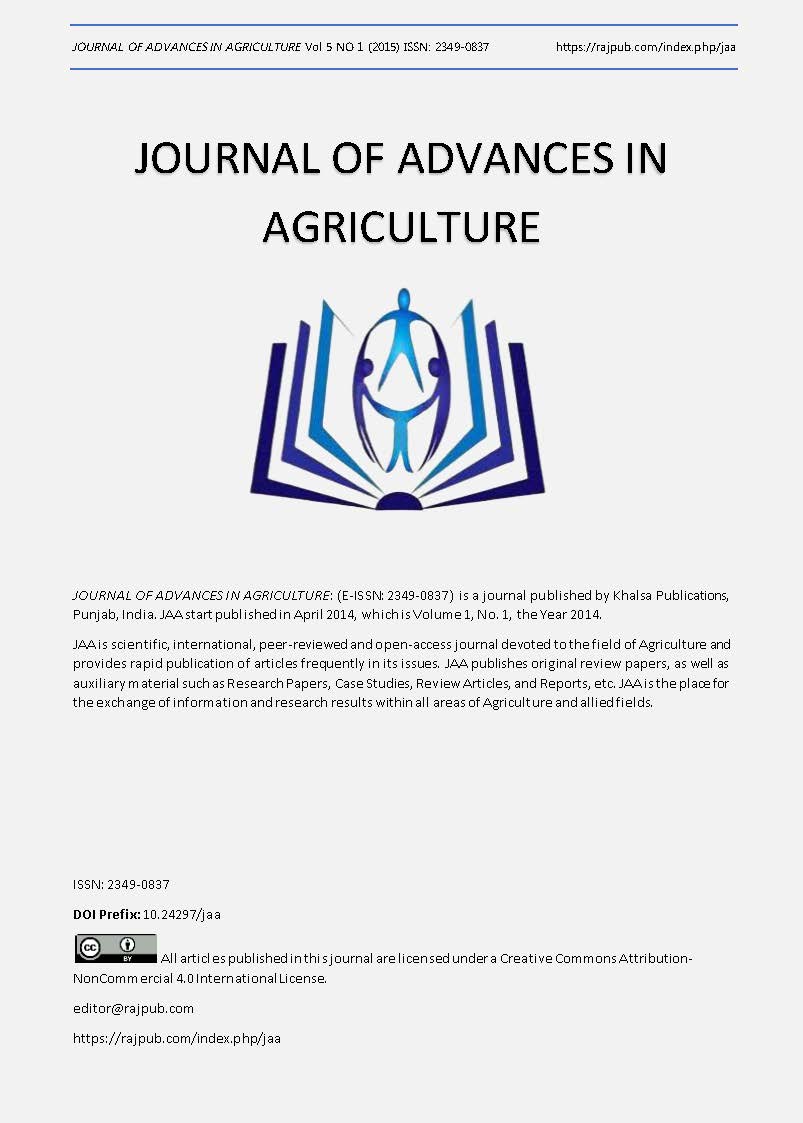Establishment theoretical of recommendation fertilization guide of vegetable crops in Algeria: concept and validation
DOI:
https://doi.org/10.24297/jaa.v5i1.5054Abstract
The goal of fertilization is to meet the nutritional needs of plants by completing the supply of soil nutrients in an economically profitable and environmentally friendly. Achieving on-farm optimum economic crop yields of marketable quality with minimum adverse environmental impact requires close attention to fertilization guide. The recommendations seek to do this by ensuring that the available supply of plant nutrients in soil is judiciously supplemented by additions of nutrients in fertilizers. The objective is that crops must have an adequate supply of nutrients, and many crops show large and very profitable increases in yield from the correct use of fertilizers to supply nutrients. The main objective of this work is to establishing a reference guide of fertilization of vegetable crops and cereal in Algeria. To meet this objective, we have processes in two steps: 1) Establishment of theoretical fertilizer recommendation from international guide of crop fertilization; 2) Validation of these developed theoretical fertilizer recommendation by trials in the fields. Sixteen fertilization guides of vegetable crops from the Canadian provinces (5 guides), USA (10 guides) and countries of northern Europe England (1 guide). Generally, the rating of these recommendation is ranging from poor soil to soil exceedingly rich; however, the numbers of fertility classes are very different. Indeed, Quebec Ontario, Minnesota, Wisconsin New England, Maryland and Kentucky and Florida guides are subdivided into 5 fertility classes, ranging from poor soil to soil exceedingly rich. The recommendation of New Brunswick and Manitoba contain six classes. The recommendation of Michigan, Nova Scotia and England contain 10 and 7 fertility classes respectively. The recommendation fertilizer of New York and New Jersey have 3classes. Unlike the systems of fertilization recommendation mentioned above, the recommendation fertilizer of Pennsylvania is based on continuous models of P, K and contains 34 classes for P and 22 classes K. Then we standardized the P soil analysis with conversion equations (Olsen method) and units of measurement (kg/ha, mg/kg…).Following this procedure we transformed discontinued systems of fertility classes in to continuous models to facilitate comparison between the different fertilization recommendation models in one hand, in other hand to obtain critical value (CV).Finally, we used statistics of the conditional expectation in order to generate the theoretical recommendation fertilization guide of fertilization with 7 fertility classes (VL, L, M, MH, OP, H and VH). The next step was calibrating soil tests against yield responses to applied nutrient in field experiments. A database (not published data) from agriculture and agri-food Canada, were used. Production of pumpkin responded positively and significantly to P or K soil fertility levels, increases being observed with P more often than with K. According to the Cate-Nelson methods, the critical value of Olsen-P in the top 20 cm of soil was about 25 mg/kg: at values of greater than or equal to 25 mg/kg, crops achieved about 80% of their maximal yield in the absence of fertilizer application. The CV of K in soil for this crop was about 140 mg/kg. The CV found was very close to this generated by the theoretical method for recommendation of fertilization guide. Finally, we used the procedure of Cope and Rouse in both sides of the CV in order to make subdivisions of different groups of soil fertility. One calibrates the soil-test value against yield response to tile nutrient to predict fertilizer requirement.
Downloads
Downloads
Published
How to Cite
Issue
Section
License
 All articles published in Journal of Advances in Linguistics are licensed under a Creative Commons Attribution 4.0 International License.
All articles published in Journal of Advances in Linguistics are licensed under a Creative Commons Attribution 4.0 International License.




